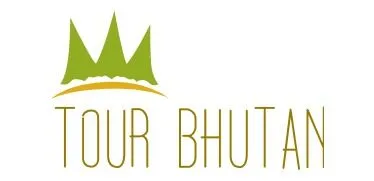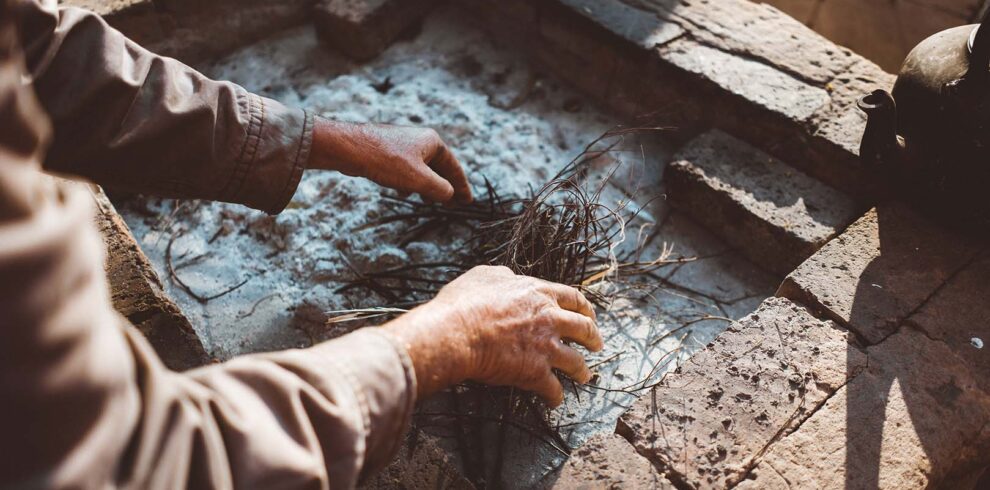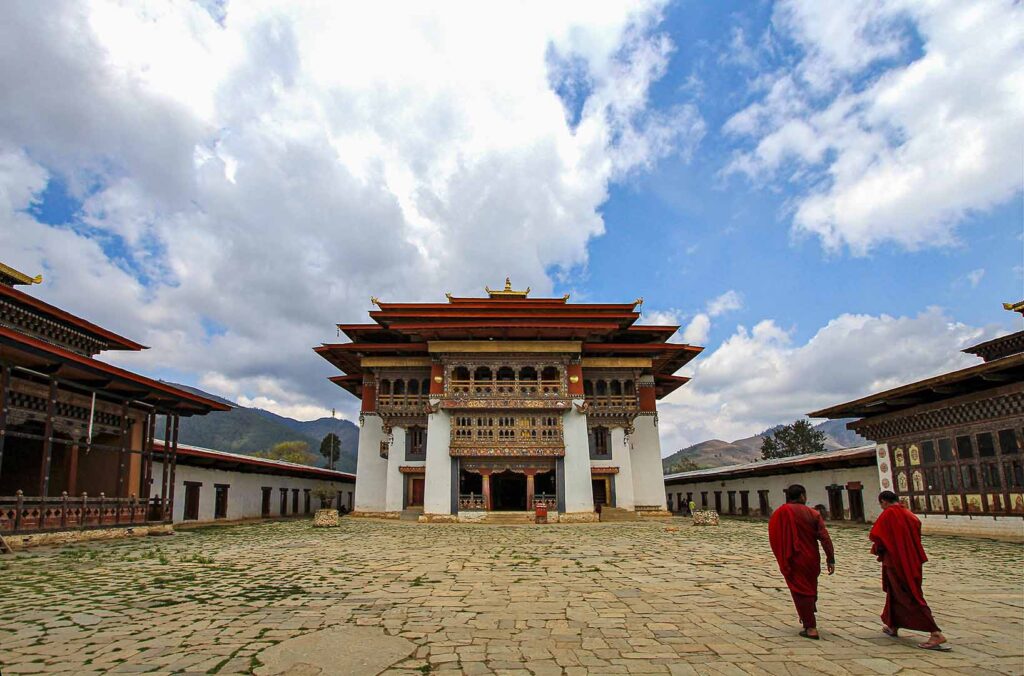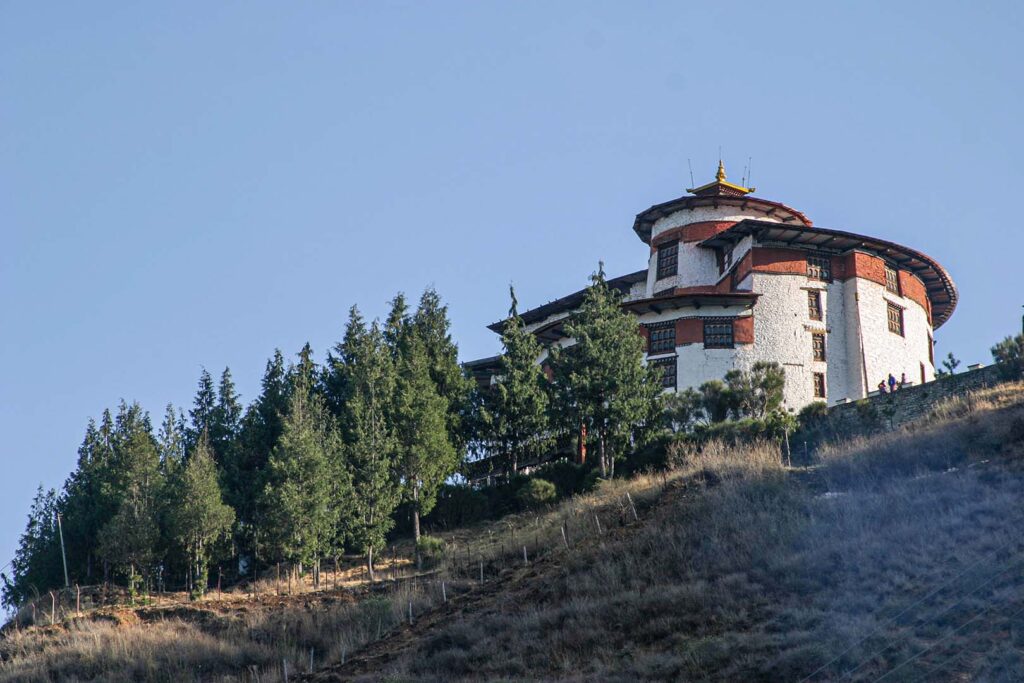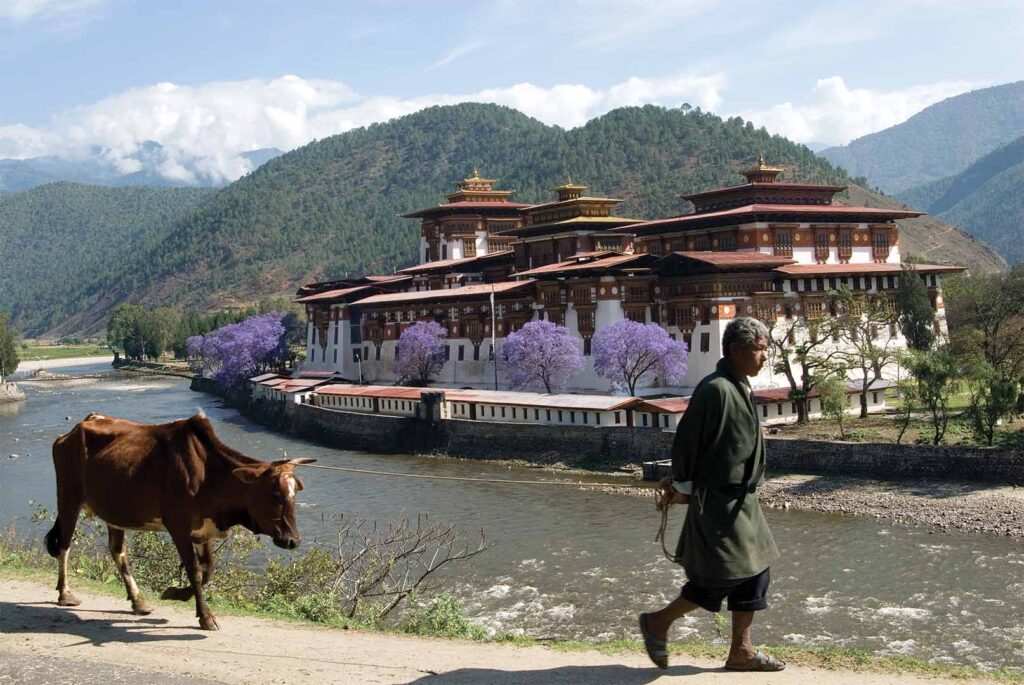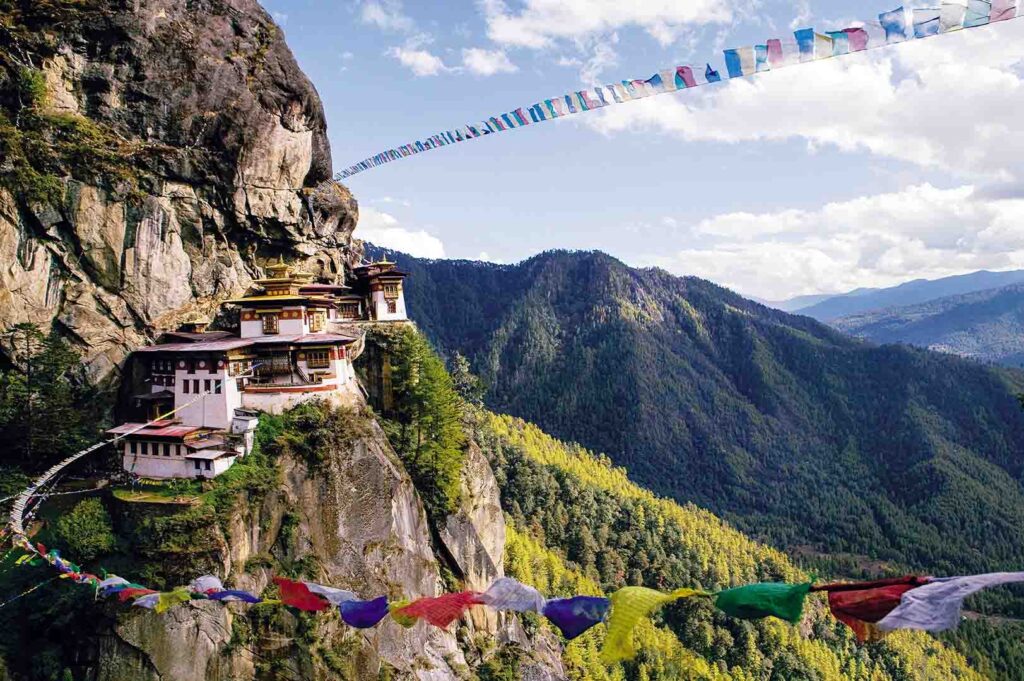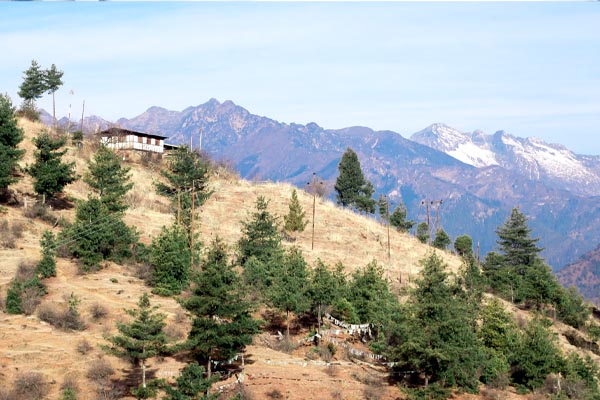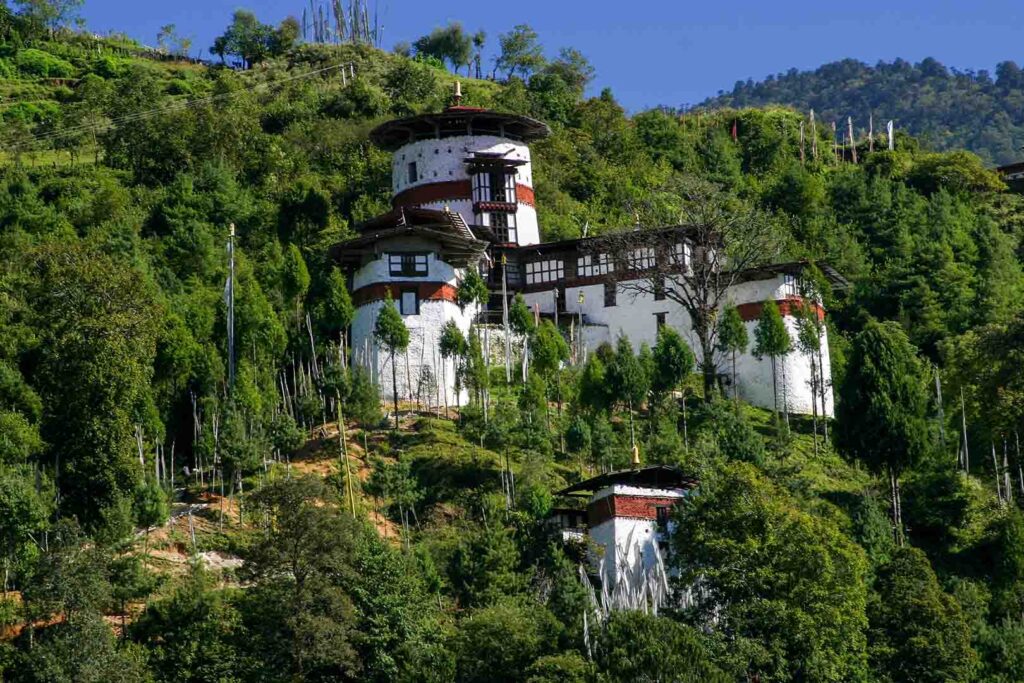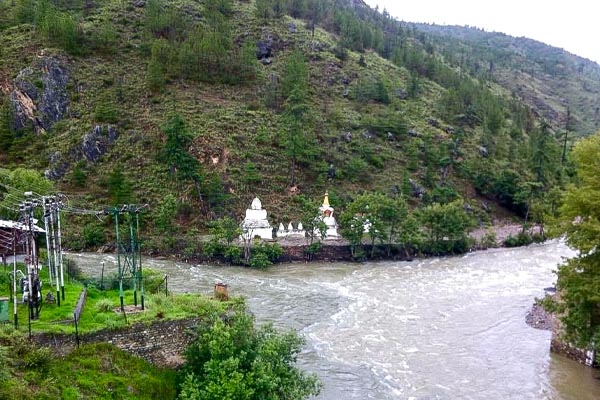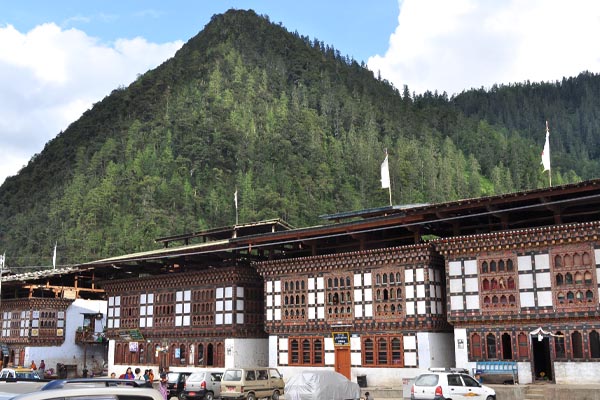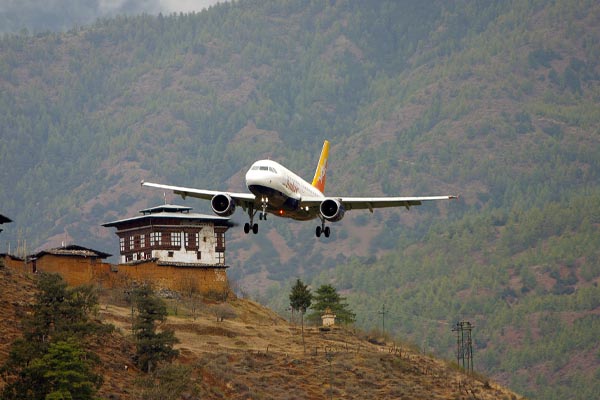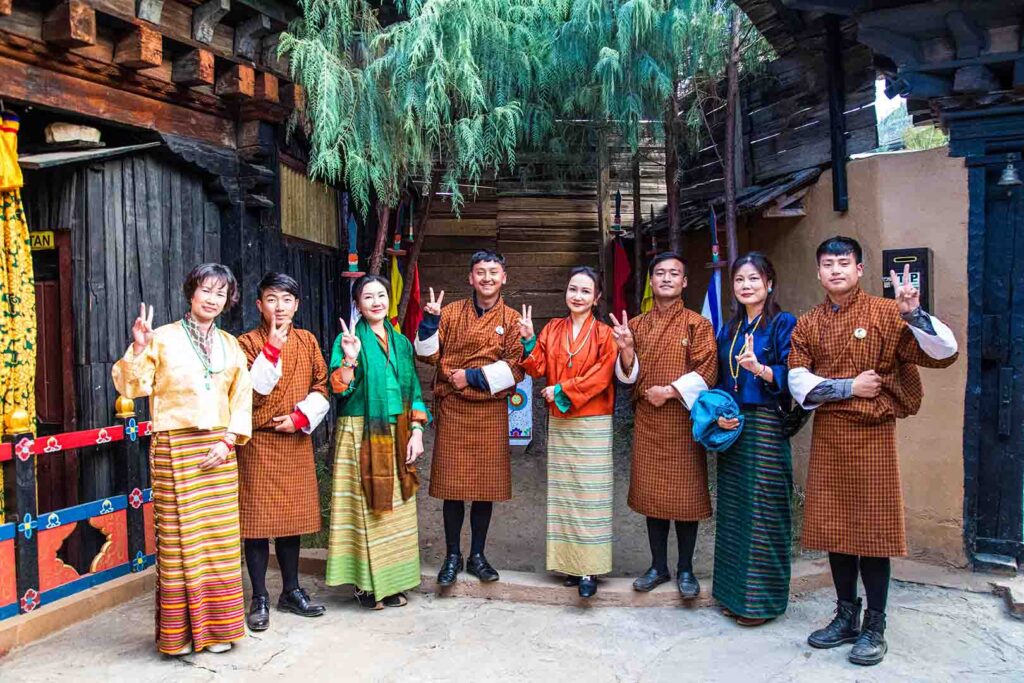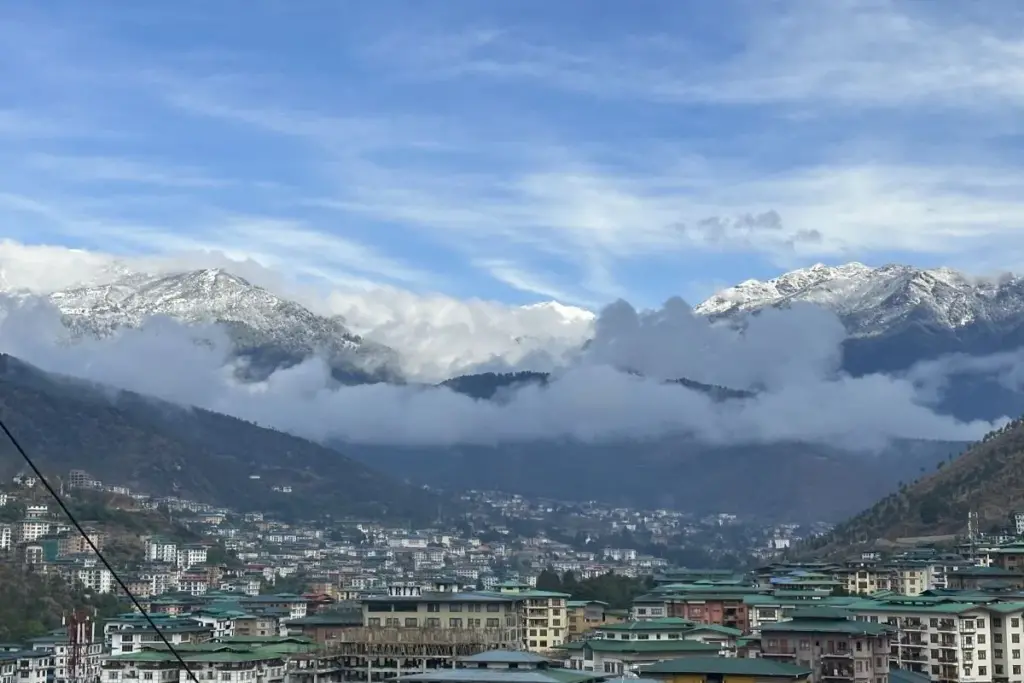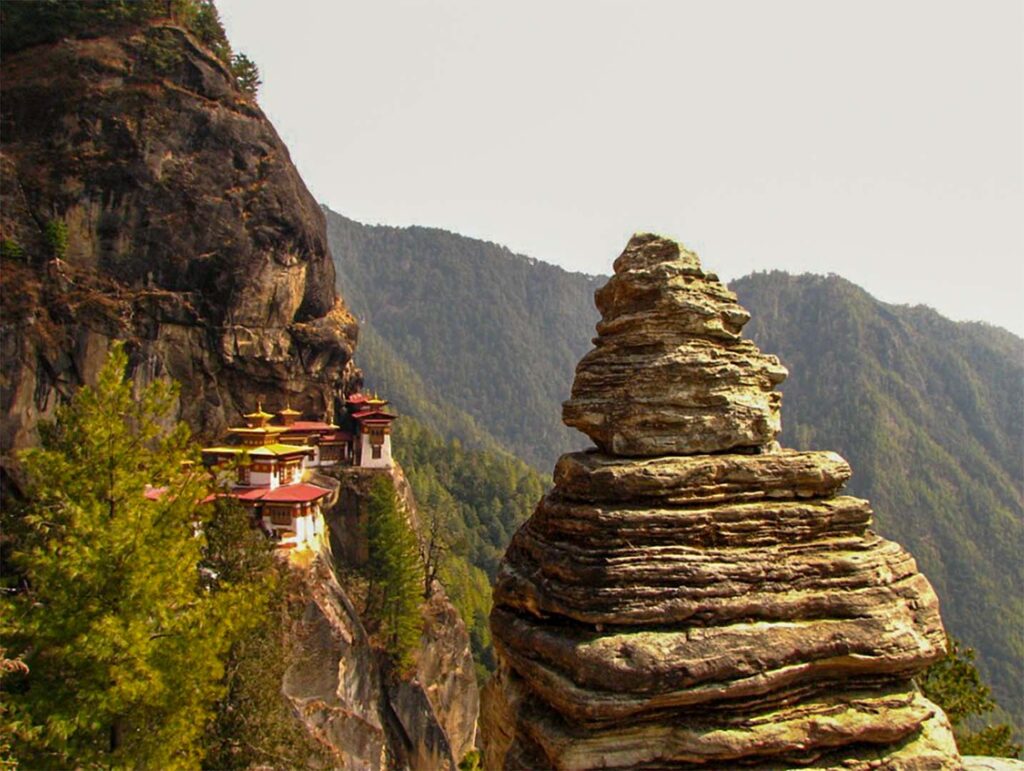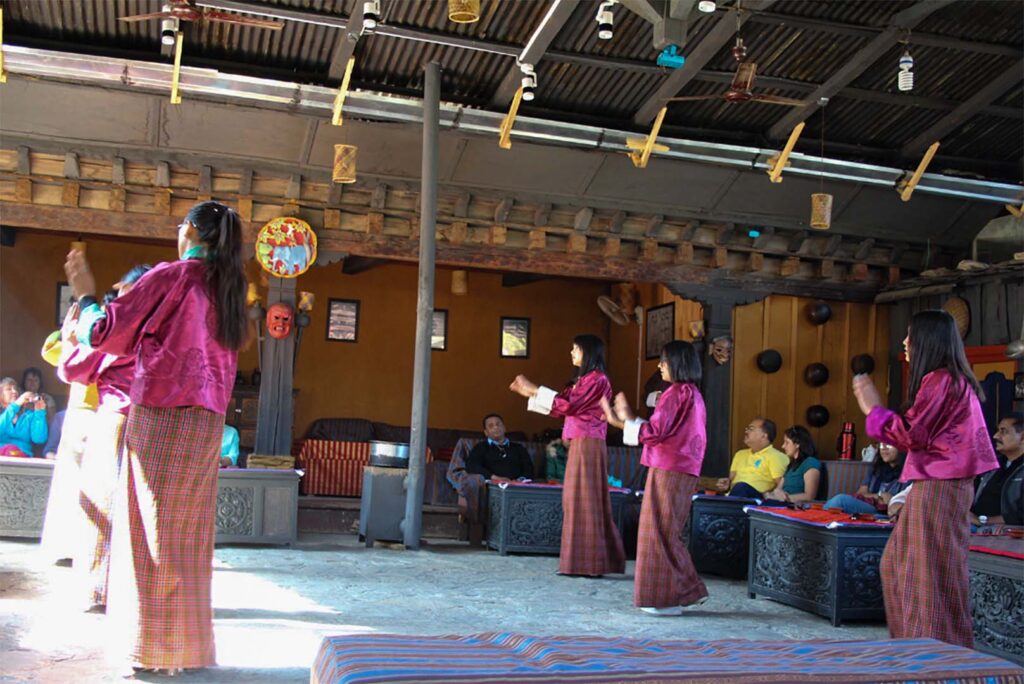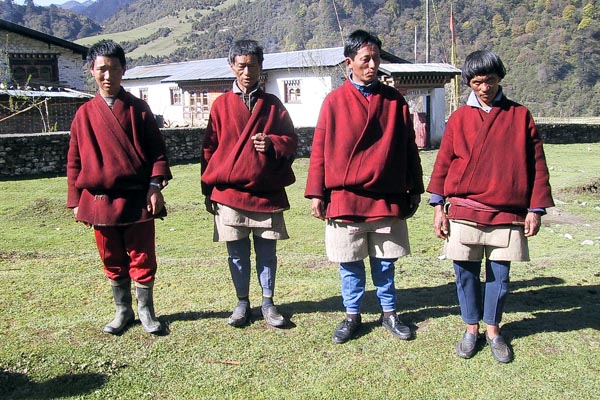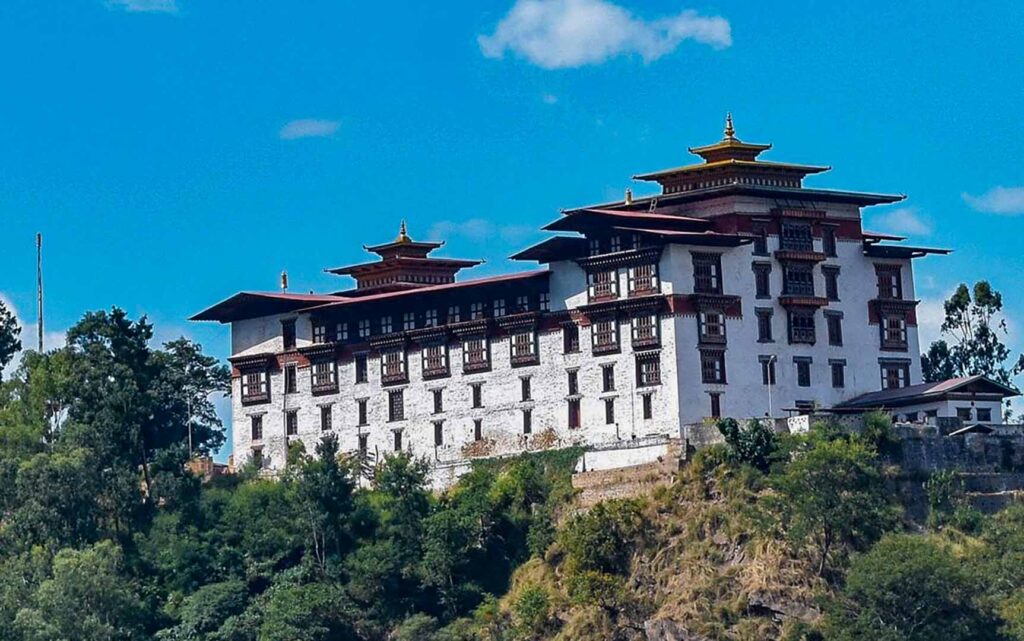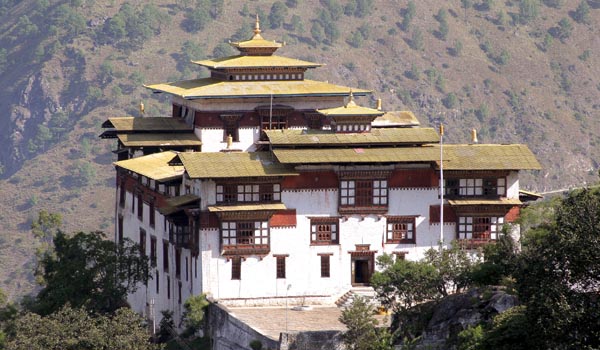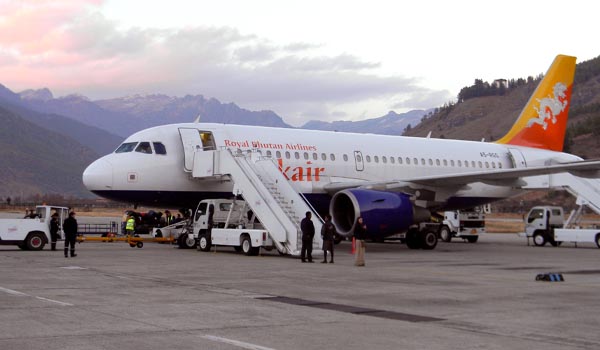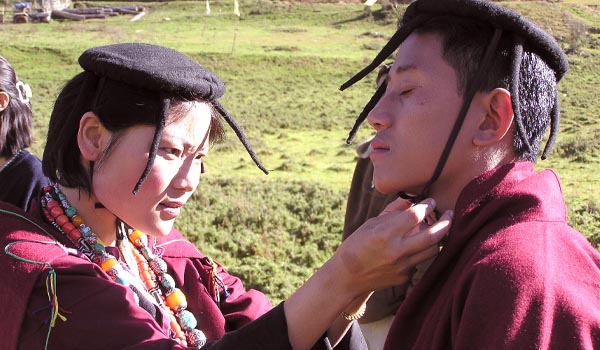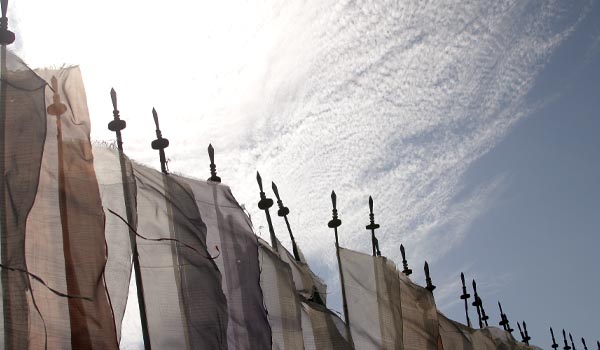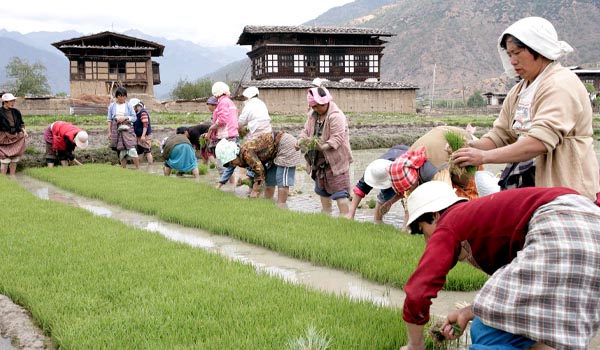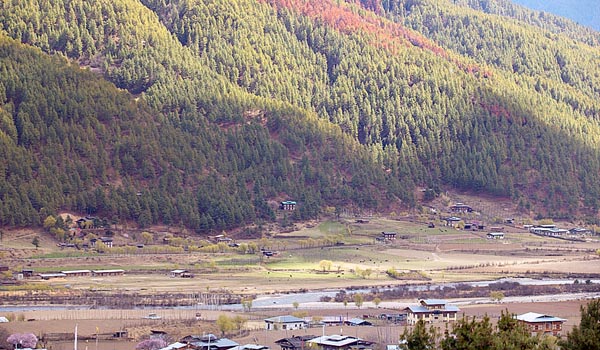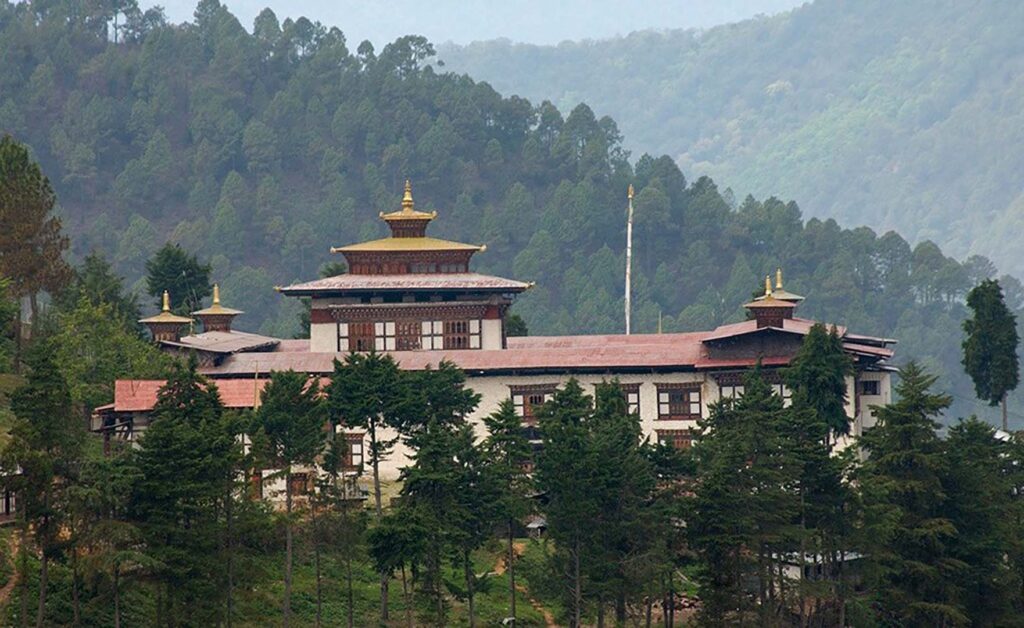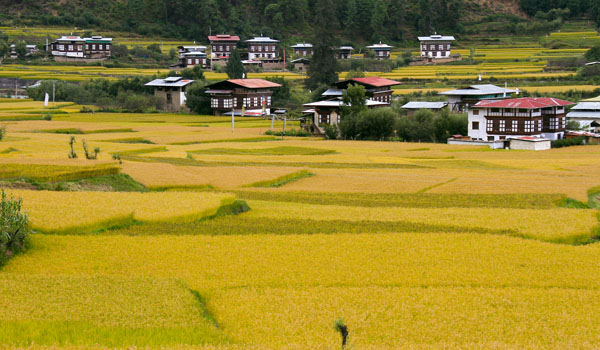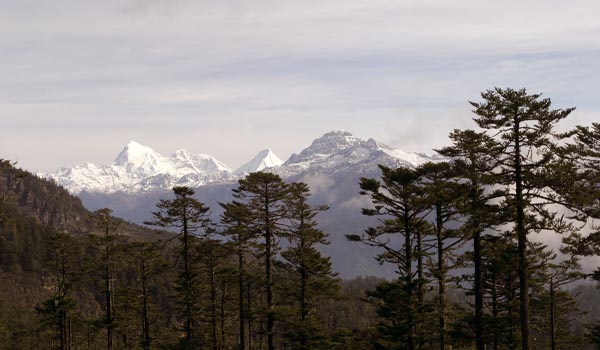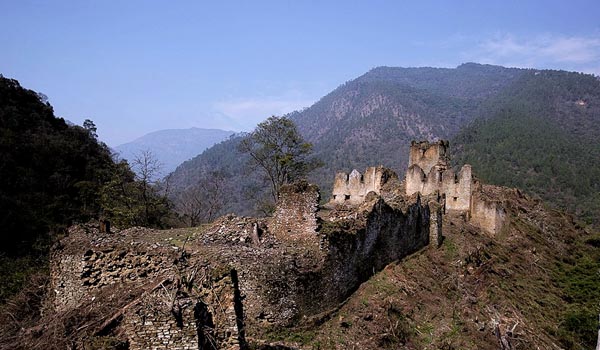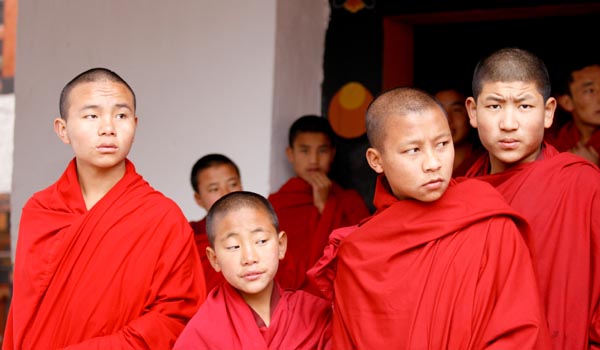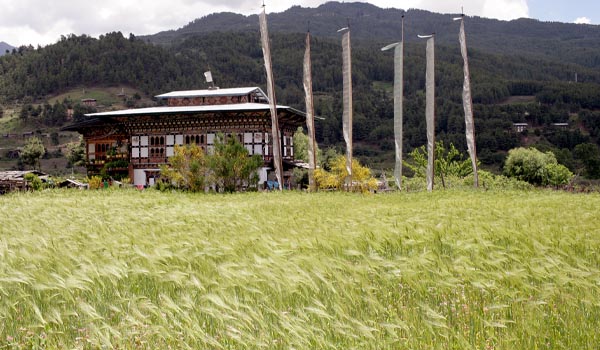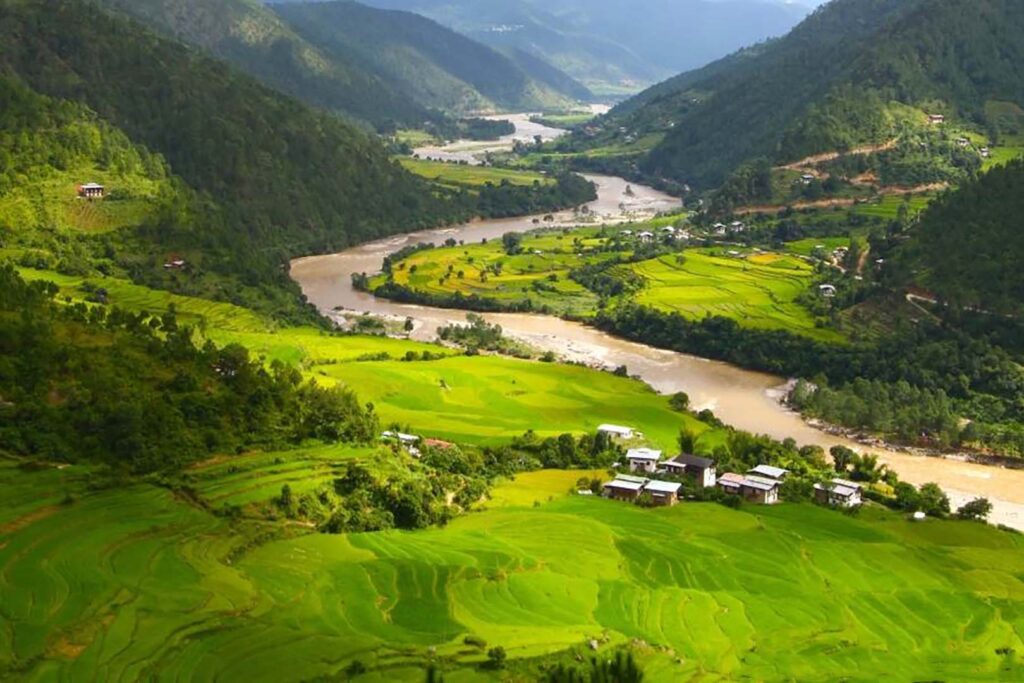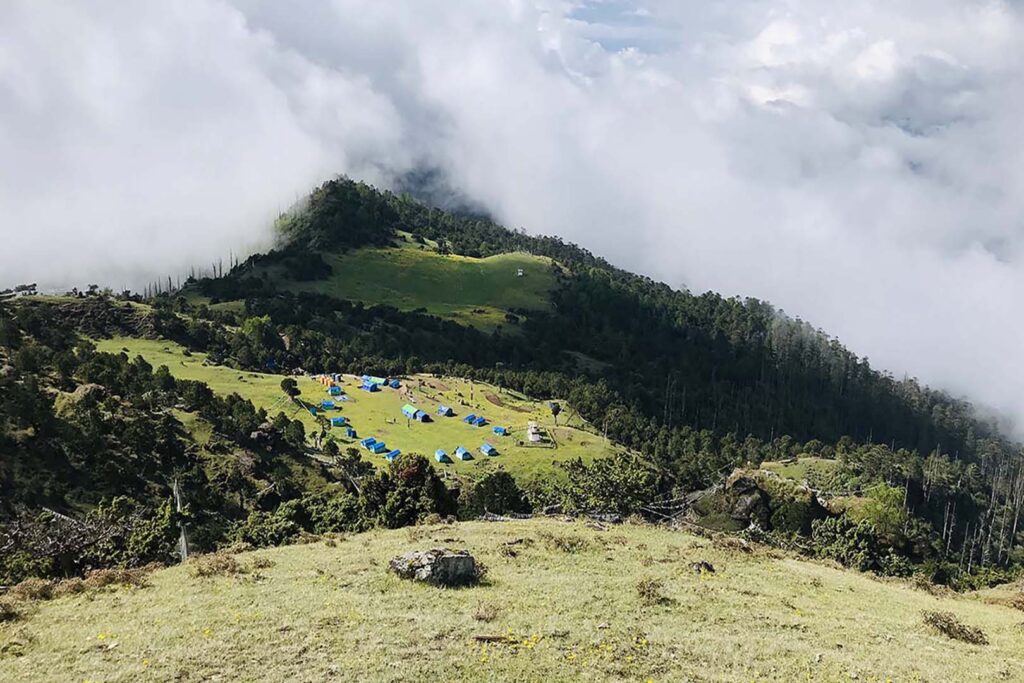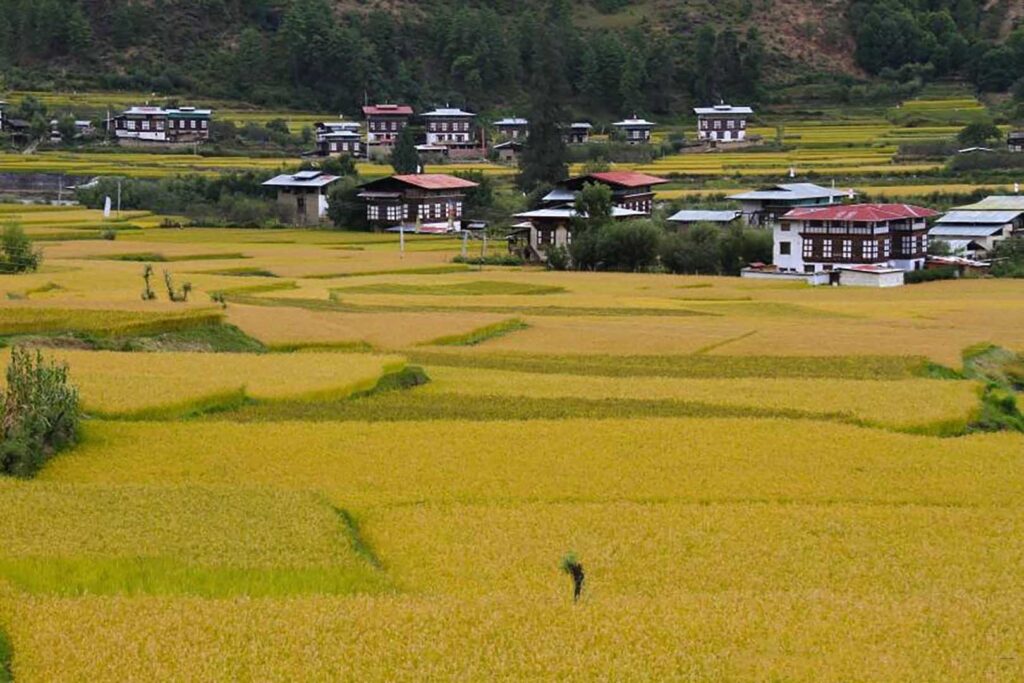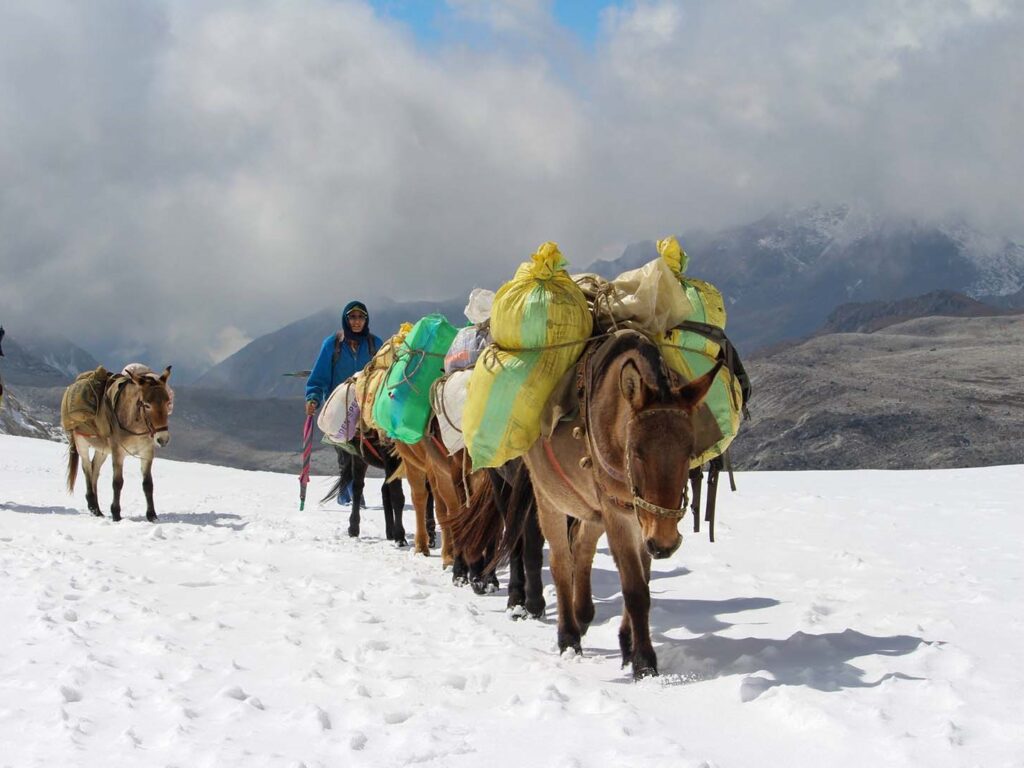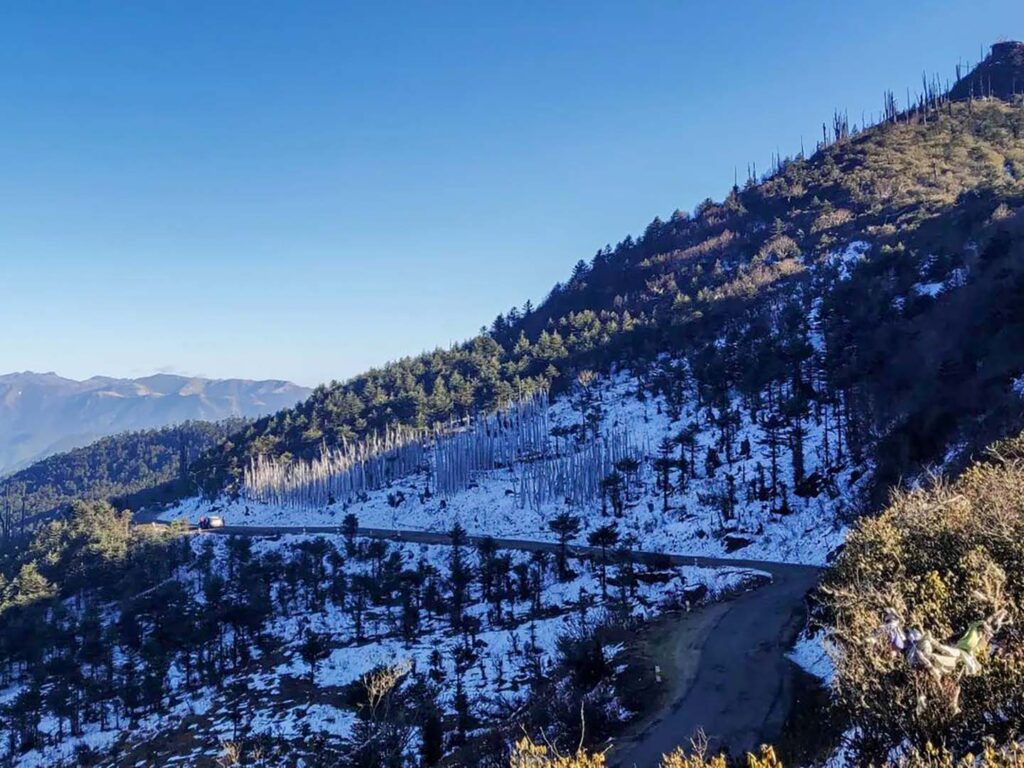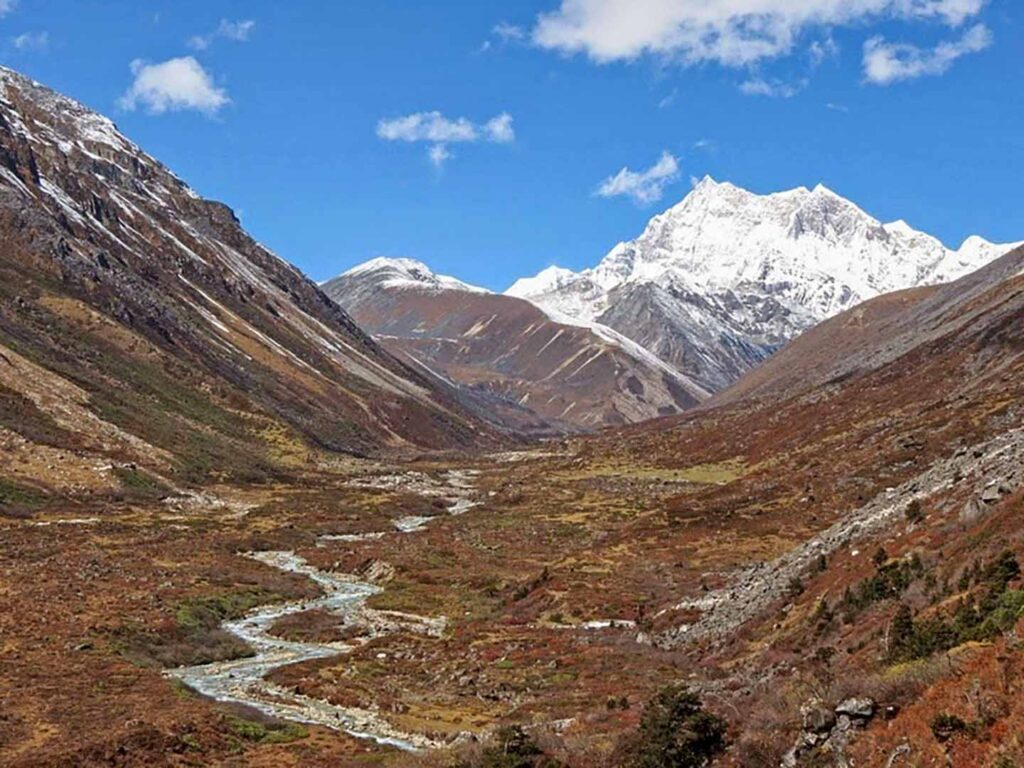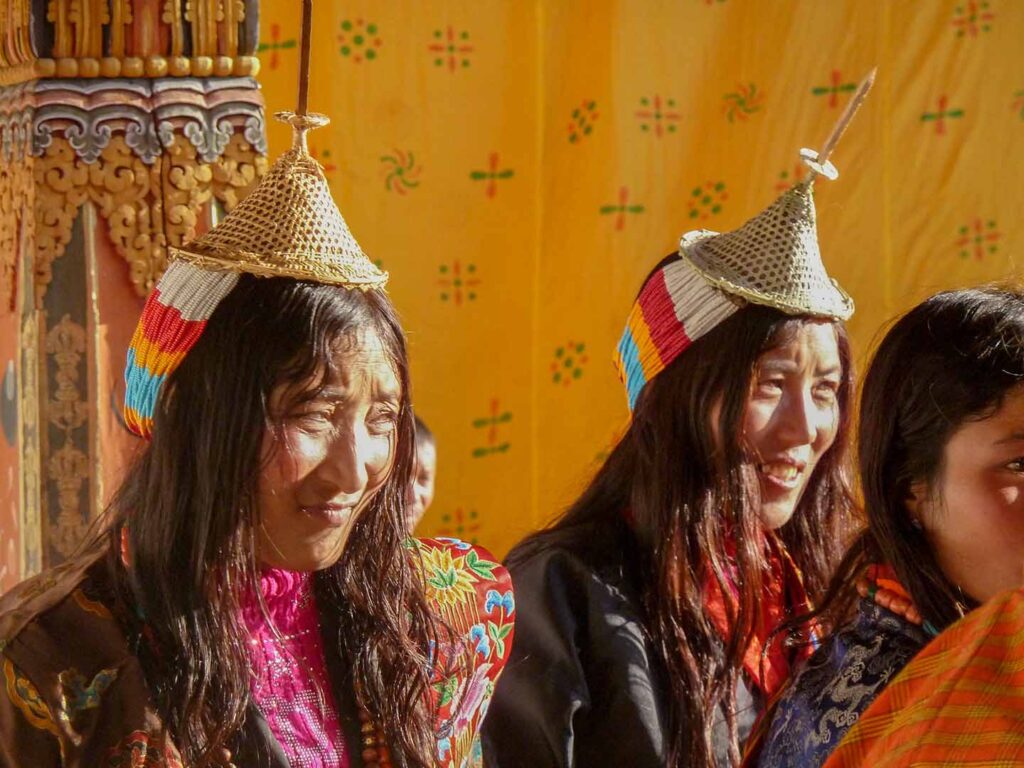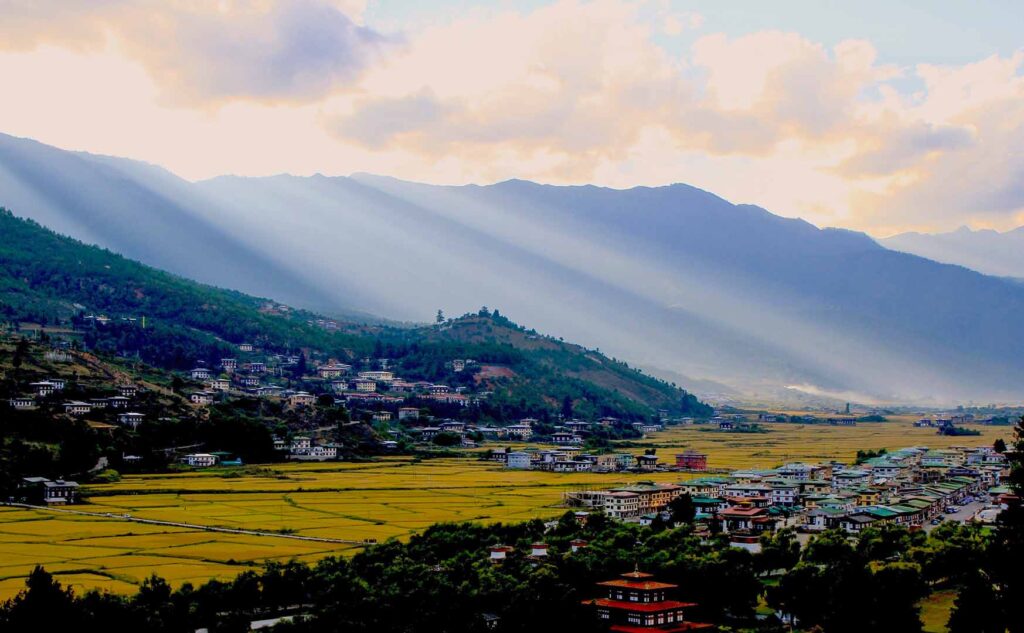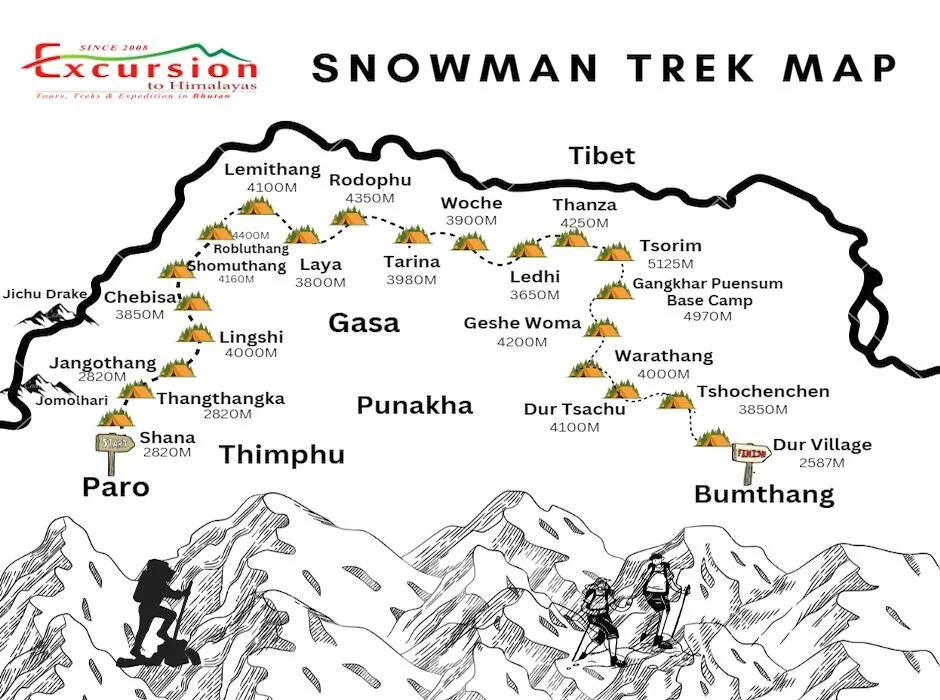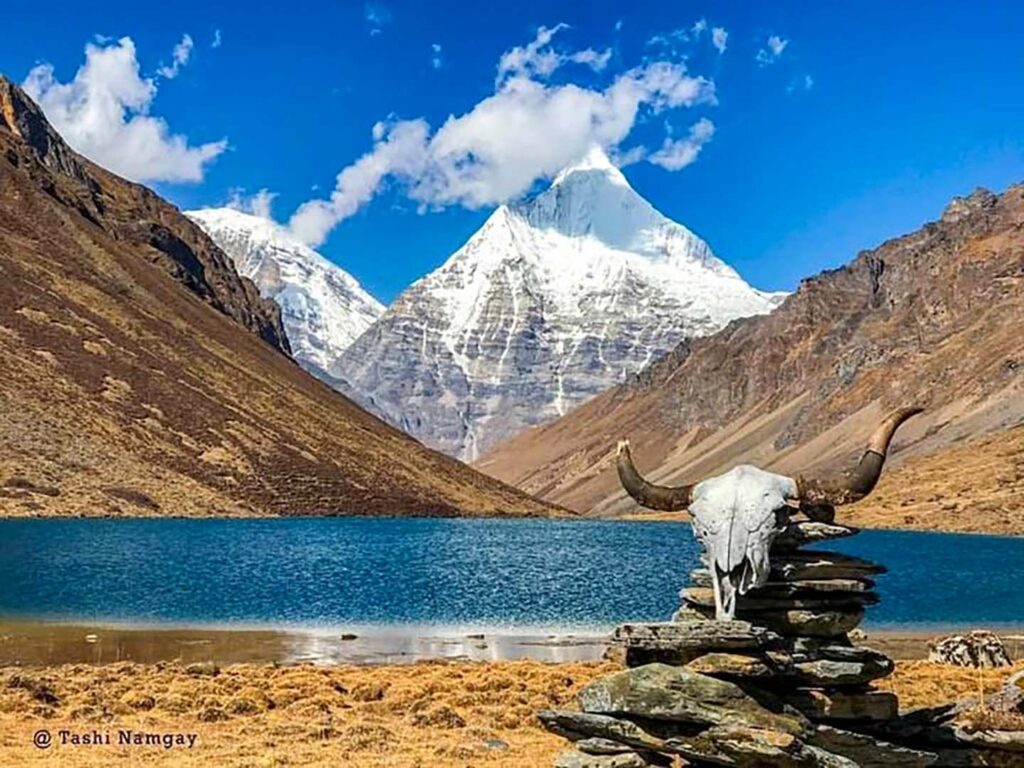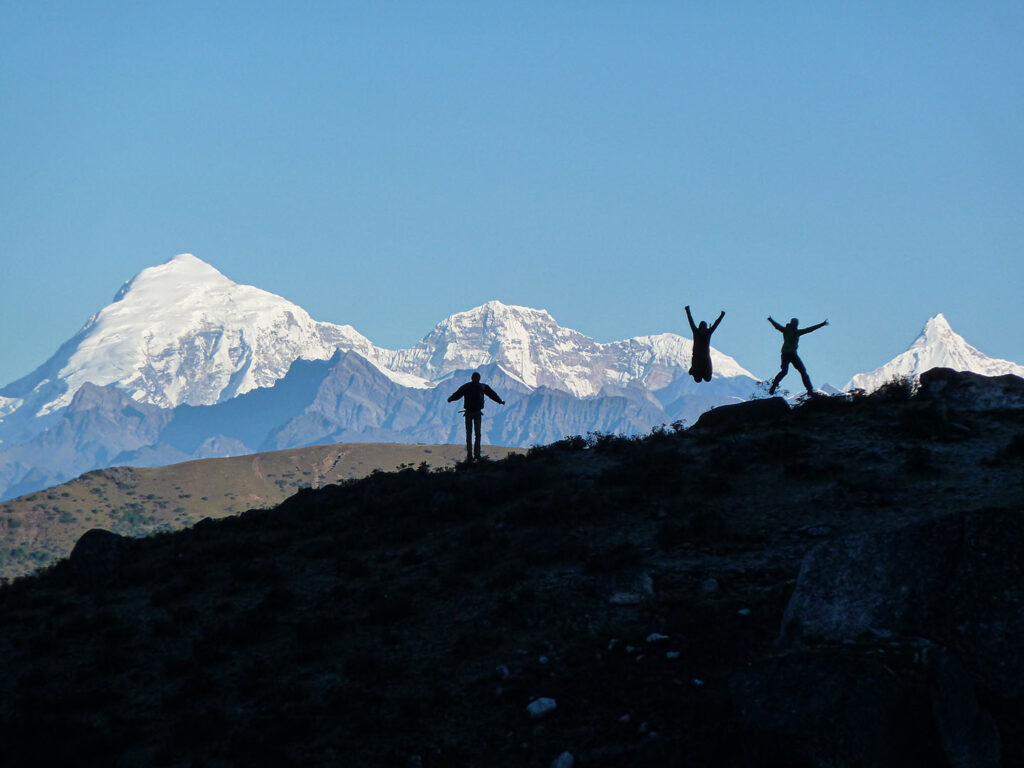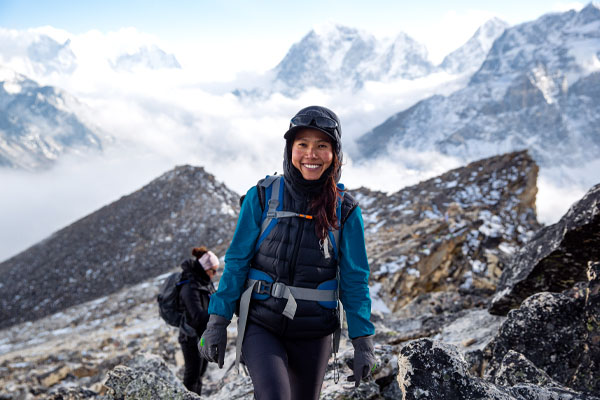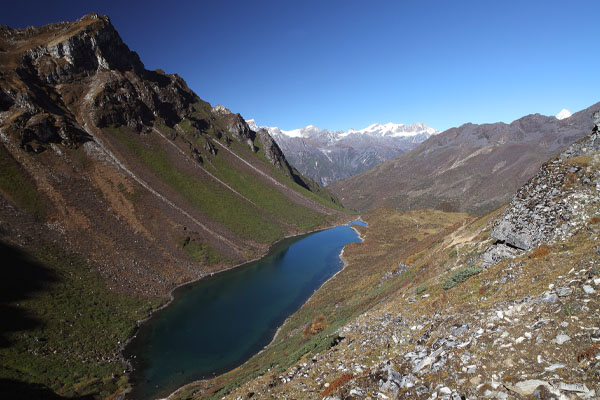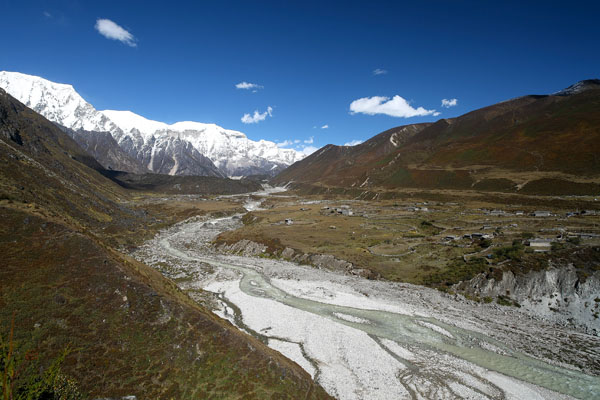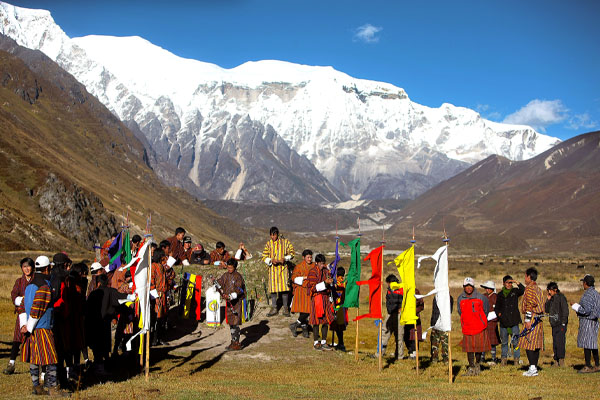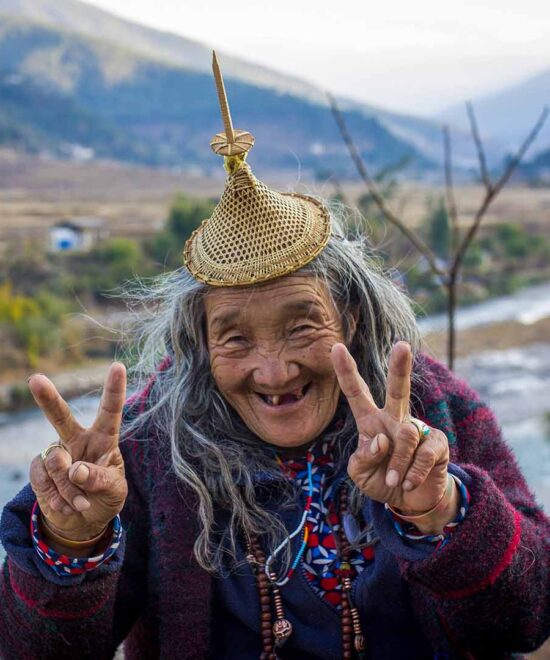
Happiness
Most of the tourists visiting Bhutan from India come here to breathe the fresh air and relax. You read that right! Bhutan holds the distinction of being the only carbon-negative country in the world. This is a monumental title to hold. Think peaceful, untouched landscapes, punctuated only by the sounds of its rich wildlife and gurgling rivers. Bhutan’s Constitution mandates that 60% of its lands be under forest cover at all times, with the current forest cover approximated at 72%.
This of course makes it not only carbon-neutral but also the only carbon-negative country in the world! They don’t just talk about sustainable development and ecological preservation as a future goal, but already practice it in full force.
This isn’t something a traveler usually loves hearing when planning a Visit. But Bhutan makes it work to its advantage and that of the tourists. Following a ‘High value, low-impact tourism policy, a holiday to this country can be quite expensive and hence, an exclusive affair for citizens of most countries. Barring Indian any other foreign national is required to pay sustainable Development Fees of USD 200 apart from services like hotels, accommodation guides, and meals. A considerable percentage of this fee is contributed back to community initiatives, free healthcare, and the right to education. With this minimum fee, Bhutan successfully controls the number of visitors and maintains a sustainable format of tourism, giving way to negligible traffic, near-empty attractions, and an unspoiled vista of valleys and roads.
Key among the many things the 4th King is credited which is converting Bhutan into a constitutional democracy and convincing its people to vote for their first Parliament in 2008. This transformation was a royal directive, rather than a sociological economic result. This move ended the century-old monarchical rule and gave the citizens a more empowering role in their country’s progress. While the people love their royal family and pictures of the current King, his Queen, and his 2-year-old son adorn the walls of shops, restaurants, and even homes; they now also have a bigger say in governance.
It is hard to imagine that just forty-odd years ago, Bhutan didn’t participate in the world. There were fewer than 20 cars, the United Nations hadn’t recognized it as a country and it had never been invaded or colonized; remaining free from western influence. (Fun fact: Bhutan didn’t participate in World War II)
This has largely continued to be the theme. No McDonald’s, no Starbucks, no giant supermarkets, no skyscrapers, no western architecture, no billboards advertising products (western or local). Bhutan is refreshingly devoid of some of the most familiar sights your eyes are drawn to when you visit a new country.
Bhutan Preserves its tradition and culture.
There are no traffic signals in Bhutan
Over 75% of the country practices Buddhism, which teaches its people to be kind and reverent towards one another, their environment, and animals. This way of life has ensured a very low crime rate in the country.
Violent crime is rarely reported, and petty crime is uncommon. Homicide cases are under 20-25 in a year.
No jokes here! it is another fine (albeit shocking) example of just how different and fascinating Bhutanese culture is. Chimi Lhakhang, a temple situated in the beautiful erstwhile capital city of Punakha, has visitors from all over the world who come to pray to the ‘Divine Madman’ for fertility and the good health of their children. Drukpa Kunley or the ‘Divine Madman’ was a maverick, enlightened saint who subdued a demon at the site of this temple with the ‘magic thunderbolt of wisdom’ aka, his Penis. This man and his symbol of triumph are celebrated and worshiped today, as a revolutionary who went about questioning the stringent doctrines of Buddhism and slept with countless women in open rebellion against traditional norms.
This is a country that is a living, breathing example of the Utopia many people around the world dream of. The Last Shangri-La, the land of the Thunder Dragon. A blessing to journey into and an experience impossible to match.
The best time to visit Bhutan starts from March to June and September to December. All Bhutan is considered an all-year-round destination. Winter can be chilling with temperatures below zero degrees and roads being covered with ice which makes traveling risky. Summers in Bhutan is not so hot with temperature ranging from 15 to 24 degree but monsoon rain can be damaging. Most of the touristic places like Thimphu Paro, Punakha, and Haa experience just moderate rainfall. A cultural tour of Bhutan will be the best tour to do at this time of the year. Summer is best to observe the greeneries and a photography tour can be amazing. The country offers the best vegetation and favorable weather for a good photo.
The Winter months start in December and last till late march. Snowfall during this time of the year is confirmed. Cultural tours, Photography tours, and some Winter trek in Bhutan are best at this time of the year.
Spring and Autumn is the best time to Visit Bhutan not because of the weather but this is the time of Festivals in most part of Bhutan. Paro Festival and Punakha Domchoe is a popular Spring festival in Bhutan and Thimphu Tshechu and Jambhay Lhakhang festival in Bumthang is Popular Autumn Festival. Weather and Vegetation also favor this time of the year. Check our 5 Days Bhutan Tour
Bhutan has so much to offer. If you have very little time, the Best places to visit in Bhutan are listed below.
Paro: Paro is the only international airport in Bhutan. Paro is such a nice broad valley with an airport just located in the middle of the paddy field and a town still filled with traditional houses. “This town just looks like the wild west town,” some of our guests remarked. While in Paro don’t forget to hike the most popular Tiger Nest Temple.
Thimphu: This is the only capital in the world with no traffic lights. White-gloved policeman still controls the huge traffic. The town is well organized. The best thing to do while in Thimphu is to visit Mojo park only place where they play live English music. There are also Hikes and biking trails in Thimphu if you love adventure.
Punakha: Punakha is a small village that is 2 hours drive from Thimphu. White water river rafting and camping are famous in Punakha. Punakha Dzong and Longest suspension bridge are must-visit places in Punakha.
Find the monthly guide for Best Places to Visit in Bhutan and check what you can do in Bhutan each month
Visa is a must for all nationalities excluding nationalities from India, Bangladesh, and the Maldives. All visa for Bhutan is applied by the local tour operator whom you have booked your tour of Bhutan.You need to fill out the visa form, need confirmed flight tickets, and a valid passport copy to get your visa. Once you send this document to the Bhutan Tour Agency you just have to wait for a few days. A Visa acceptance letter will be emailed to you. Your actual visa will be stamped upon arrival at Paro International Airport. For more details please check Bhutan Visa. Read how to enter Bhutan?
